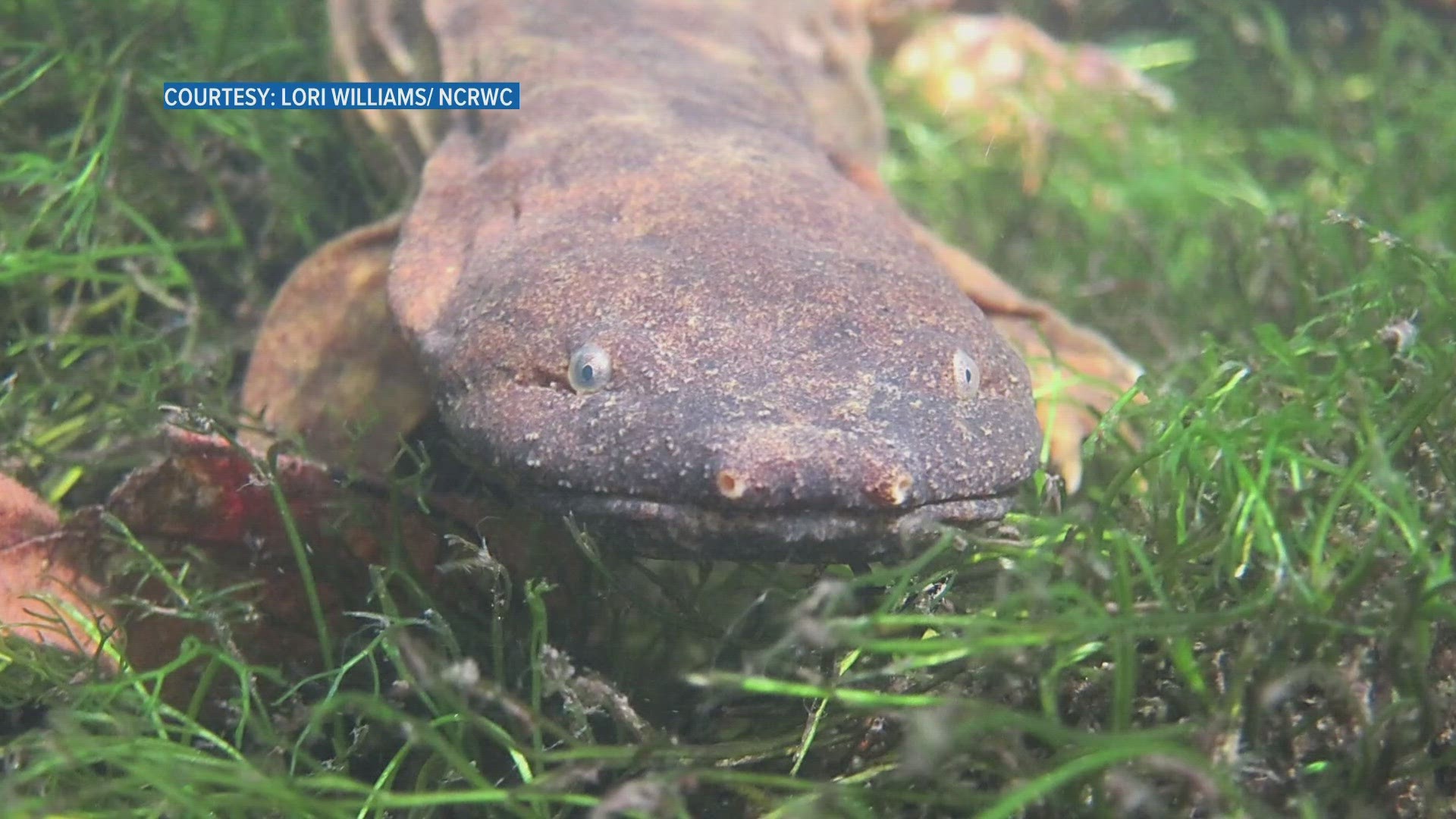KNOXVILLE, Tenn. — Although hard to see, for many years the Hellbender Salamander could be found at the bottom of most East Tennessee freshwater streams. A recent dip in their population is making them harder to find, and scientists say humans are to blame.
The species of salamander predates human existence.
"This is an animal that has been around for at least 70 million years, coexisted with dinosaurs. They survived mass extinction events and the big mass extinction event, of course," said Dr. Hopkins, a professor at Virginia Tech.
The population is facing a population decrease due to human activity. A study from Virginia Tech explained how deforestation affects the species' behavioral tendencies.
"Hellbenders normally spend about eight months taking care of their babies, the dads do all the work. And when you lose forest cover, they don't do that and what's even worse is, instead of taking care of the babies, they eat them," said Hopkins.
The high levels of cannibalism along with illegal killings of the salamanders have led to the drop in numbers. Hellbenders are found in freshwater, making them an indicator species to humans when looking for bodies of water that are safe for consumption. East Tennessee streams are among the most populated spots for Hellbenders.
"This species evolved here, they are a natural part of the ecosystem, and it's immoral to expropriate any of the species we have around here — particularly these large charismatic salamanders like the Hellbender," said Dr. Drew Crain, a professor at Maryville College.
Humankind has had such a bad effect on the environment over the last 200 years that some scientists are describing us as being in a new geological age, due to the large impact we have had on Earth.
"Humans now have the responsibility to be stewards of their environment, because we've had such a negative effect in the past. Now, we need to take responsibility to help out some of the species we've caused harm to," said Crain.

